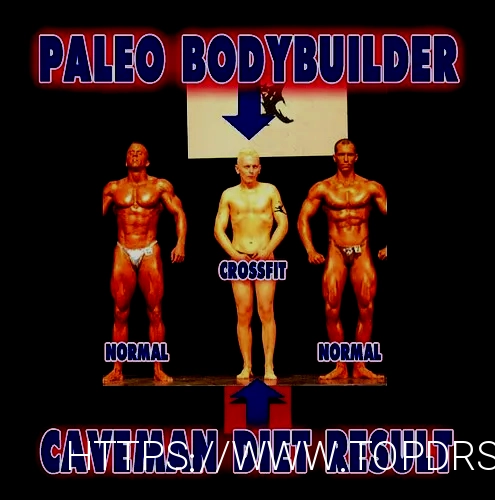Beef Cattle Nutrition and Feeding
Feed additives are typically added to dairy cattle diets to improve performance such as growth, milk yield, milk component yield, feed efficiency, and health. Their use should be based on unbiased research and their return on investment. This section will describe some common feed additives and their potential response. Potassium is the third most abundant mineral in the body, It is highly regulated with excess lost in the urine. Like Ca, K is high in green crops and also those following K fertilization.
Learn more about cattle nutrition, as well as how to manage beef cattle feeds with Penn State Extension’s articles, workshops, conferences, and online courses. When creating a feed management plan, the focus should be on increasing cattle feeding efficiency, reducing the quantity and nutrient content of manure, and achieving nutrient balance. These include partial replacement of the whey protein with blood plasma, egg protein, soy protein concentrates and isolates.
Therefore, supplemental Mg is needed especially when high-quality pasture and forages are fed. If fat is fed correctly, early lactation cows should see higher milk yields, sometimes enhanced milk fat content, but almost always a reduced milk protein concentration. However, there may be an increase in milk protein yield (kg) due to the increased milk yield. Cows should also experience improved fertility through either greater energy balance or improved hormone concentrations involved in reproduction. Protein is typically measured in feedstuffs as crude protein (CP) which is defined as the %N in a feed multiplied by 6.25.
Because of this, book values often contain both absolute amounts and percentages. Livestock nutrient requirements have been compiled into tables that can be used to quantify animal needs as the first step to formulating balanced rations (Appendix 1 and 2). To use the tables you must first describe the animal and level of performance desired and then find the amount of each nutrient required for that animal.

For example, cows could be separated into a high production group, medium production group, and a low production group based on milk yield. Or cows could be grouped by reproductive status so that most nonpregnant cows are grouped together. Also, it is common to have young, first-calf cows in a separate pen as older cows can be aggressive to the young cows and limit their time at the feed bunk.

From a deeper understanding of the ruminal microbiome to developing advanced feed supplements, an ocean of potential awaits tapping. These advancements could further revolutionize cattle rearing, making it more sustainable, efficient, and in tune with the animals’ natural processes. It provides the necessary bulk for efficient fermentation in the rumen. A diet deficient in fiber can lead to digestive issues and a drop in productivity. Enzymes called lipases break them into glycerol and fatty acids, which are subsequently absorbed.
The value 6.25 is derived from the fact that feed proteins contain approximately 16% N. However, crude protein contains not only true protein, but other N containing compounds such as amino acids, dipeptides, nucleic acids, NH3
—N, and other non-protein nitrogen (NPN) compounds. It also needs to be realized early on that cattle as with all animals do not have a protein requirement, they have an amino acid requirement and true proteins are defined as chains of amino acids. Cattle can use amino acids for the production of enzymes, milk proteins, immunoglobulins, muscle and various organs and tissues in the body.
It is a constituent of the equation to calculate free water intake27 and is involved with DCAD. It is important in the function of the Na—K ATPase which is needed for cation transport in and out of cells. Sodium is absorbed throughout the digestive tract as is thought to be 100%.19 The requirements of Na are highly variable and is about 0.24% of the diet.19 Salt deficiency results in pica and usually takes 2–3 weeks to occur. A sign of salt deficiency is the consumption of urine by deficient cows. Salt toxicity can occur if inadequate fresh drinking water is absent, with udder edema and eventual collapse will occur. It is suggested that most cows be fed diets containing greater than 50% of the diet as forages, however, this can vary significantly depending on the inclusion of fibrous byproducts.
Carbohydrates, particularly the complex ones found in plants, are primarily fermented in the rumen to produce VFAs. These fatty acids, mainly acetate, propionate, and butyrate, are a primary energy source for the animal. By delving deeper into the intricacies of cattle digestion, ranchers can make more informed decisions regarding feed, health interventions, and overall herd management. This knowledge is the cornerstone of modern, sustainable ranching practices.

Water is second only to oxygen as the most important element for life.24 Milk is 87% water and is critical for milk production. As described earlier, water is essential for rumen microbial development in the preruminant calf and ultimately critical in the conversion of the calf from non-ruminant to ruminant (see calf and heifer section). Sources of water are either free-water (drinking water), feed water and water from endogenous reactions.
Water-soluble vitamins are those that go into solution within an aqueous environment. They are typically synthesized at adequate quantities within the rumen. However, there are some water-soluble vitamins that when supplemented can have beneficial effects. Vitamin K is involved in blood clotting and is synthesized by the rumen microbes at adequate quantities. Vitamin A, D, and E need various levels of supplementation depending on the diet fed.

White Muscle Disease (WMD) is the common deficiency sign with leg weakness, stiffness, and muscles have chalky striations. However, the maximum tolerable amount is set at 10 mg/kg dry matter.19 It is a component of several enzymes including xanthine oxidase, sulfide oxidase, and aldehyde oxidase. When a calf consumes milk, a modification of the preruminant forestomach occurs resulting in the formation of the esophageal groove.
Acetic acid (2 carbons in length) and butyric acid (4 carbons in length) are used for milk fat synthesis in the mammary gland of the lactating cow, while propionic acid (3 carbons in length) is primarily used for glucose. Glucose is the primary precursor of the disaccharide lactose which is the major osmol-regulator of milk. An increase in the concentration of lactose results in an influx of water into the mammary gland resulting in increased milk yield.
The production of fermented grain (high-moisture corn), is the process where corn grain is harvested at 75% DM and packed in a silo. The process of packing will expose the internal contents of the seed to microbial fermentation. Resulting in the production of lactic acid to prevent deterioration. The energy of the grain will be released due to the fermentation of the grain.

New technology has developed where calves are allowed to suckle essentially at will. Besides increasing immunity, there are other components in colostrum that positively affect gut health resulting in increased health and overall performance. An additional reason for the removal of cows from the herd is selling cows to other dairy producers. Dairy producers planning to increase herd size often increase cow numbers by retaining larger numbers of heifers within the herd.
Excess phosphorus (P) and potassium (K) in livestock diets is expensive and potentially damaging to the environment and to animal health. This publication suggests ways to improve feed management and avoid overfeeding… Example of energy requirements (pounds of total digestible nutrients, Check this for What do wolves eat TDN) of a cow during various phases of the biological cycle. Percentages noted refer to proportions of energy accounted for by each phase in relationship to the total annual energy requirement. Total digestible nutrients (TDN) – an estimate of the energy in feedstuffs.
Using a refractometer only requires two drops of colostrum and it does not need to be at room temperature. High-quality colostrum has a refractometer reading of approximately 25% Brix. Brix is a measurement of the sugar content but in colostrum, it measures the total solids content which correlates positively to the IgG concentration in colostrum. Four liters of good quality colostrum should be fed as soon as possible after birth and another 2 L should be fed within 12 h after calving.

Rumen microbes can incorporate fatty acids into their cell membrane and modify the typical even number of carbon fatty acids into odd C chain fatty acids. Unsaturated fats have double bonds whereas saturated fats are fully hydrogenated. Most plant fats are unsaturated whereas most terrestrial animal fats contain varying amounts of saturated fat. Fat comprises the most energy dense nutrient with 2.25 times as energy than carbohydrates or protein. Fat is not appreciably fermented in the rumen resulting in little heat of fermentation and can help maintain caloric intake especially when cattle are experiencing heat-stress. NE is typically calculated and can be partitioned to NE of maintenance, growth, lactation, etc.
This groove forms causing milk to bypass the forestomach to the abomasum for digestion. It provides concise information on the basics of livestock manure management, including handling, storage, composting, use, and ways to reduce negative … This publication describes trends in cattle prices and explains the use of seasonal price indices to estimate future cattle prices. The indices allow producers to estimate prices for potential sale months, which can be helpful in budget planning. Recent research indicates vaccine efficacy is at risk due to improper handling and storage by retailers and livestock producers.
This is likely due to a dilution effect of colostrum in the Holstein. This is likely due to first lactation cows having a more naïve immunity in comparison to cows with more parturitions. It appears that this is becoming less of an issue through improved nutrition of these cows prior to parturition.
It is recommended that water be available in holding areas to decrease time away from waterers. Adequate cow stalls are also important, cows need to be able to lay down for 14 h per day to optimize performance. Providing clean dry stalls is imperative for enhanced milk production. Water is the most important nutrient and cows need clean, fresh water free of stray voltage or anything that decreases intake (off flavors). To provide for optimal water intake cows need about four inches of water space per head. Waterers should be cleaned routinely, some high producing herds clean that waterers at every milking.
These negative effects are a function of how rapidly these fats are available to microbes in the rumen. For instance, cottonseeds, or lightly processed feedstuffs (such as cracked soybeans) will not have a deleterious effect due to their slow release. Further processing (reducing particle size) of higher fat feedstuffs will result in negative effects on rumen fermentation. The oil can coat the fiber and reduce fiber digestibility and also result in decreased numbers of microbes. Microorganisms which reside in the forestomach of ruminants ferment carbohydrates to produce end products called volatile fatty acids (VFA). The primary VFA for cattle are acetic acid, propionic acid, and butyric acid.

Cattle are very sensitive to electricity and will often reduce intakes of water and therefore feed when they experience stray voltage through their water source. Observations of stray voltage can be but are not limited to cattle testing the water with their tongues before they drink and lapping water while they drink. Finding the source of electricity and mitigating the problem is critical to maintaining cattle performance. Sustainable livestock production utilizing rangelands requires knowledge of the nutritional value of available forage and experience with the probable responses by livestock to the quality and availability of that forage….




